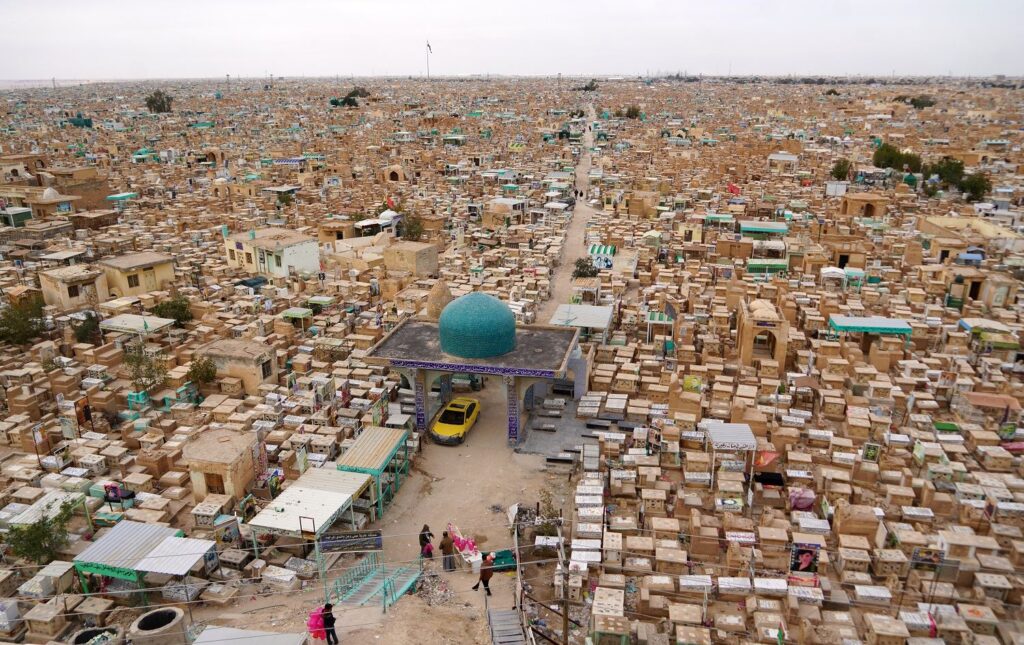Exploring Wadi Al-Salam: The World’s Largest Cemetery
Located near the city of Najaf in Iraq, Wadi Al-Salam is the world’s largest cemetery and a fascinating place of pilgrimage for Shi’a Muslims. The cemetery covers an area of over 5 million square meters and is filled with the tombs of millions of Shi’a believers.
From the outside, the cemetery looks like an immense desert, but upon closer inspection, it reveals its fascinating and unique history. This article will explore the history, importance, and sights of the world’s largest cemetery.
A Brief History of Wadi Al-Salam
The history of Wadi Al-Salam dates back to the 7th century. The cemetery was established by the son of Imam Ali, who is considered to be the first Imam of the Shi’a faith. It is said that the cemetery was originally called the Valley of Peace, a name that still remains to this day.
Since then, the cemetery has become a place of pilgrimage for Shi’a Muslims. Many Shi’a devotees come to visit the tombs of the Imams and other important figures in their faith.
The Importance of Wadi Al-Salam
Wadi Al-Salam is an important religious site for Shi’a Muslims. The cemetery is believed to be a place of holiness and sanctity, and it is believed that the souls of those buried here will be granted access to Heaven.
The cemetery is also the burial site of many important figures in the Shi’a faith. It is the final resting place of Imam Ali, the first Imam of the Shi’a faith, as well as the tombs of other Imams and important scholars in the Shi’a tradition.
For these reasons, Wadi Al-Salam is an important place of pilgrimage for Shi’a Muslims. Every year, hundreds of thousands of devotees make the pilgrimage to the cemetery to pay their respects to the Imams and other important figures in the Shi’a faith.
Sights at Wadi Al-Salam
Wadi Al-Salam is filled with fascinating sights and structures. The cemetery is divided into several sections, each containing the tombs of important figures in the Shi’a faith.
The most important section is the Mausoleum of Imam Ali, which is located in the center of the cemetery. This impressive structure is a popular pilgrimage site for Shi’a Muslims, and it is said that anyone who visits the mausoleum is granted access to Heaven.
Another important structure is the Shrine of Abbas, the half-brother of Imam Ali. This shrine is a popular pilgrimage site for Shi’a Muslims, and it is said that anyone who visits the shrine will be freed from their sins.
Visiting Wadi Al-Salam
Visiting Wadi Al-Salam is a unique experience. The cemetery is a fascinating place of pilgrimage for Shi’a Muslims, and it is filled with the tombs of important figures in their faith.
Visitors should be aware that the cemetery is a sacred and holy place, and they should be respectful of its history and traditions. Visitors should also be mindful of their clothing and behavior when visiting the cemetery.
Conclusion
Wadi Al-Salam is an impressive and unique cemetery located near the city of Najaf in Iraq. It is the world’s largest cemetery, and it is an important place of pilgrimage for Shi’a Muslims. With its rich history, religious significance, and fascinating sights, Wadi Al-Salam offers visitors a profound and unforgettable experience. Whether you’re exploring the Mausoleum of Imam Ali, paying your respects at the Shrine of Abbas, or simply taking in the solemn atmosphere of the cemetery, a visit to Wadi Al-Salam is sure to leave a lasting impression. Plan your trip to this remarkable site and discover the profound spirituality and cultural heritage of one of the world’s most significant cemeteries.

